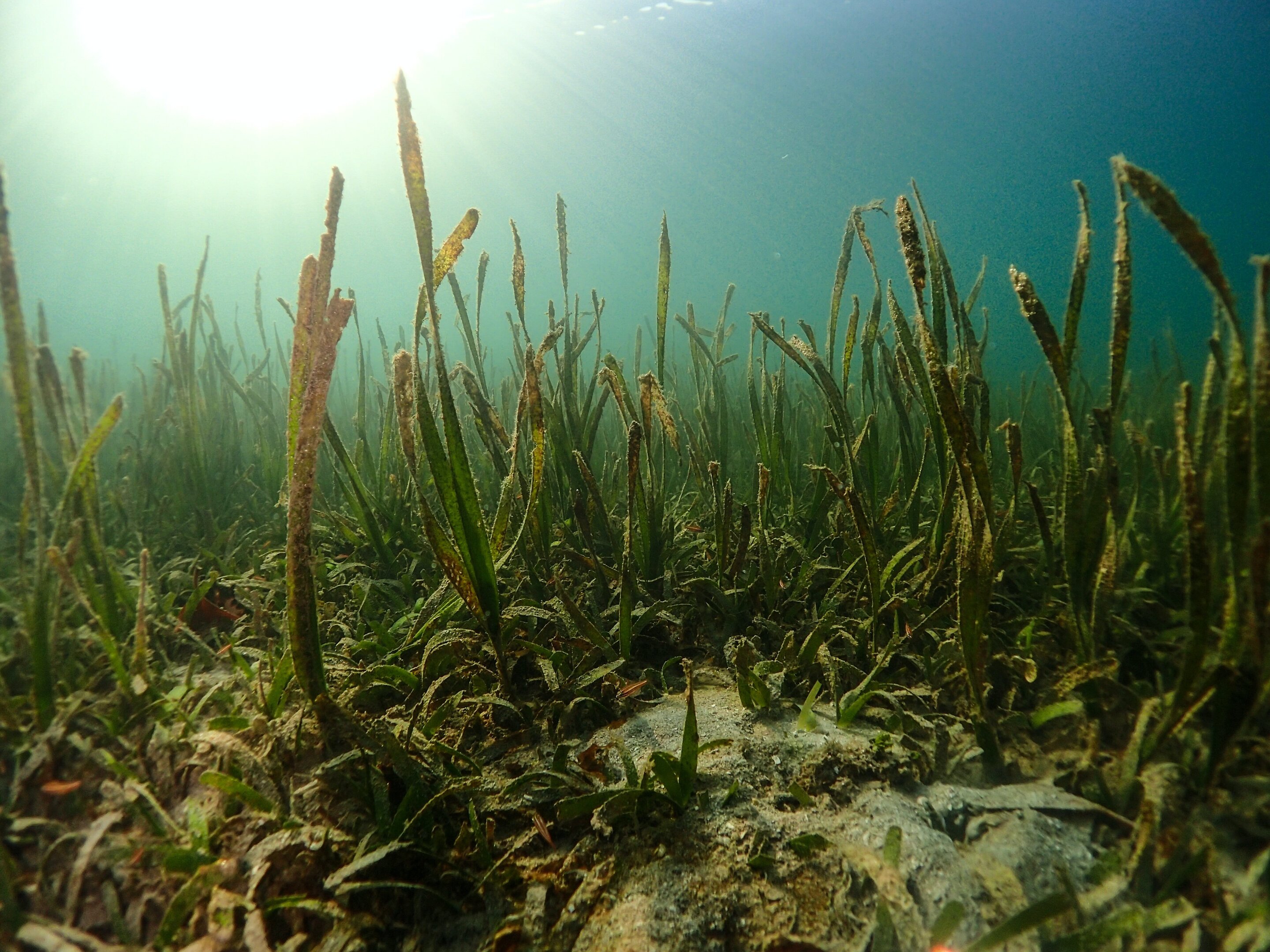Seagrass meadows, often overlooked compared to coral reefs and mangrove forests, play a vital role in our ocean ecosystems. These meadows provide numerous benefits to society and are important for carbon storage.
A recent study led by the University of Michigan quantifies the value of seagrass ecosystems in the Caribbean, highlighting their significance in the global conservation agenda. By utilizing satellite data, researchers estimate that the Caribbean harbors half of the world’s seagrass meadows and stores one-third of the global seagrass carbon.
The study reveals that Caribbean seagrasses offer services worth approximately $255 billion annually, with $88.3 billion of value attributed to carbon storage alone. In the Bahamas, the ecosystem services provided by seagrasses exceed the country’s gross domestic product in 2020 by more than 15 times.
Lead author Bridget Shayka, a doctoral student at U-M Department of Ecology and Evolutionary Biology, emphasizes the importance of conserving and protecting these threatened ecosystems. Seagrasses contribute significantly to the fight against climate change, making them deserving of greater attention and investment.
One potential approach to prioritize seagrass conservation is to include these unique underwater meadows in global carbon markets. By implementing projects that minimize loss, increase coverage, or restore degraded areas, seagrass conservation could receive funding through the sale of “blue carbon” offset credits.
Notably, many coastal and island nations already impacted by climate change possess extensive coastal ecosystems that store carbon and offer vital services to society. Blue carbon offset credits could provide a mechanism for wealthier countries to compensate for their contributions to climate change while benefiting impacted economies and conserving these invaluable coastal ecosystems.
Seagrass meadows, however, face various threats from coastal development, pollution, recreation, shipping, and climate change. Jacob Allgeier, a marine ecologist and senior author of the study, emphasizes the potential of seagrass conservation in the blue carbon market. He highlights the lack of comprehensive seagrass distribution data as a barrier to evaluating and promoting seagrass’s role in carbon storage and sequestration.
To address this, the U-M-led team used newly available satellite data to classify Caribbean seagrass ecosystems and estimate the carbon stored in both plants and sediments. They also calculated the economic value of seagrass ecosystem services, including food production, nursery habitats, recreation, and carbon storage.
Caribbean seagrasses support a diverse range of species, including commercially important animals such as grouper, queen conch, and lobster. They also provide critical habitat for green sea turtles, tiger sharks, and manatees.
Overall, the researchers estimate that Caribbean seagrasses and associated sediments store approximately 1.3 billion metric tons of carbon. While impressive, this is just a fraction of the carbon contained in Amazonian forests or temperate forests worldwide.
The study’s findings underscore the urgent need to invest in conserving and protecting seagrass ecosystems. By recognizing their global importance, we can harness the potential of blue carbon finance to support these vital underwater habitats.
In a separate study, Allgeier and colleagues demonstrate the protective benefits of artificial reefs in safeguarding seagrass ecosystems from human impacts, including nutrient pollution and overfishing.
Seagrass meadows, originating from plants that reestablished in the ocean millions of years ago, utilize photosynthesis to remove carbon dioxide from the atmosphere and store it in their tissues. The majority of carbon within seagrass beds is stored in the top meter of sediment, providing a critical carbon sink.
In conclusion, the valuation of seagrass ecosystems in the Caribbean sheds light on their economic significance and emphasizes the need for their preservation. By recognizing the value of these ecosystems and incorporating them into global conservation efforts, we can protect seagrass meadows and leverage their potential to combat climate change.
More information:
Bridget F. Shayka et al, The natural capital of seagrass beds in the Caribbean: evaluating their ecosystem services and blue carbon trade potential, Biology Letters (2023). DOI: 10.1098/rsbl.2023.0075
Citation:
Caribbean seagrasses provide services worth $255B annually, including vast carbon storage, study shows (2023, June 21)
retrieved 21 June 2023
from https://phys.org/news/2023-06-caribbean-seagrasses-worth-255b-annually.html
This document is subject to copyright. Apart from any fair dealing for the purpose of private study or research, no
part may be reproduced without the written permission. The content is provided for information purposes only.
Denial of responsibility! TechCodex is an automatic aggregator of the all world’s media. In each content, the hyperlink to the primary source is specified. All trademarks belong to their rightful owners, and all materials to their authors. For any complaint, please reach us at – [email protected]. We will take necessary action within 24 hours.

Jessica Irvine is a tech enthusiast specializing in gadgets. From smart home devices to cutting-edge electronics, Jessica explores the world of consumer tech, offering readers comprehensive reviews, hands-on experiences, and expert insights into the coolest and most innovative gadgets on the market.


